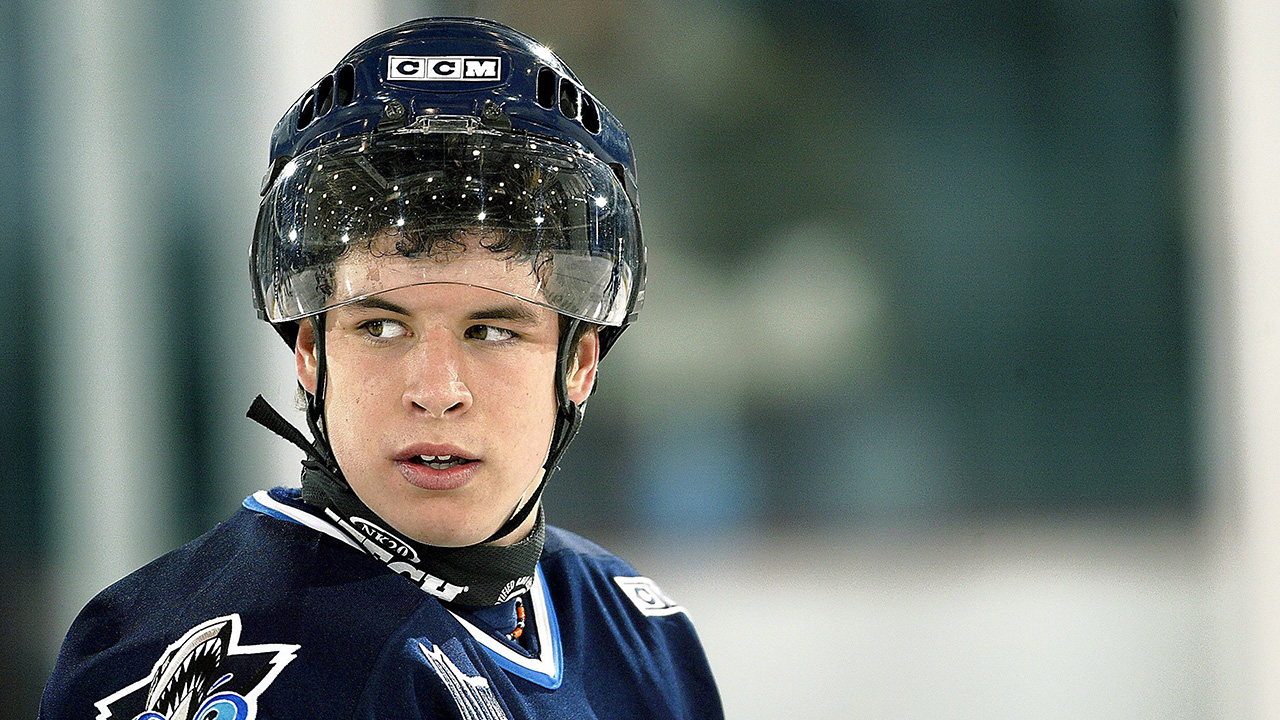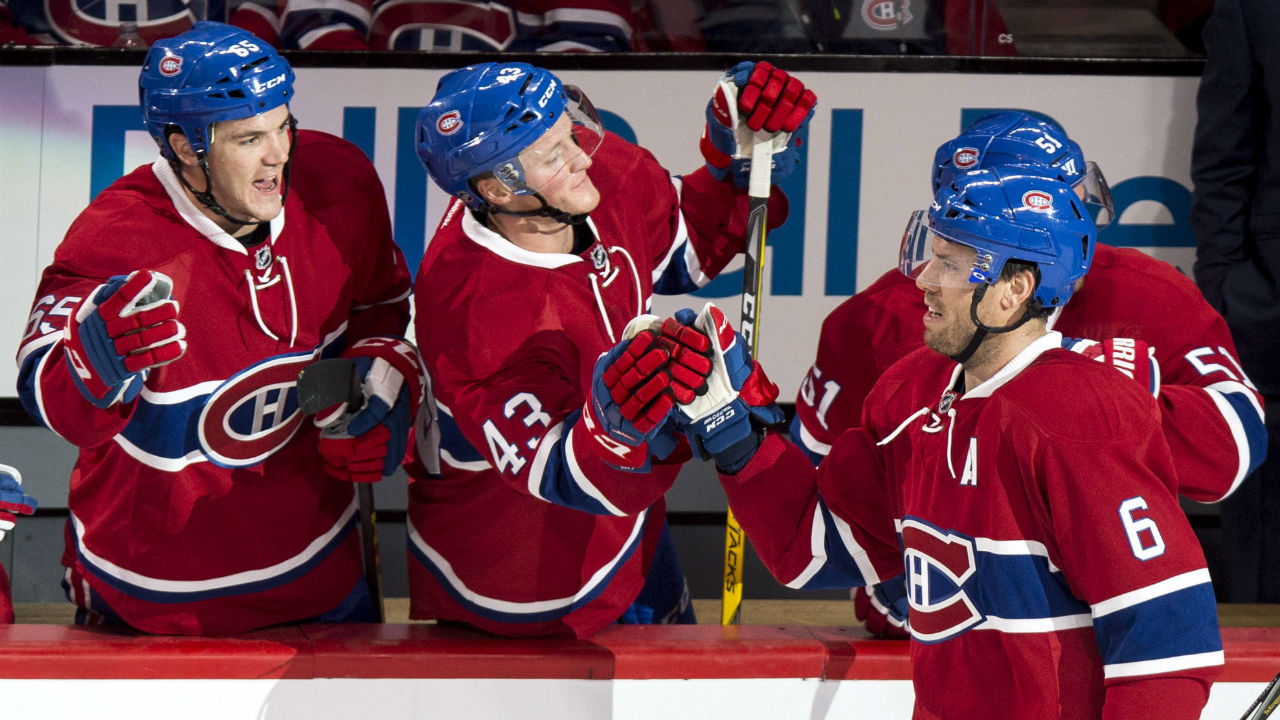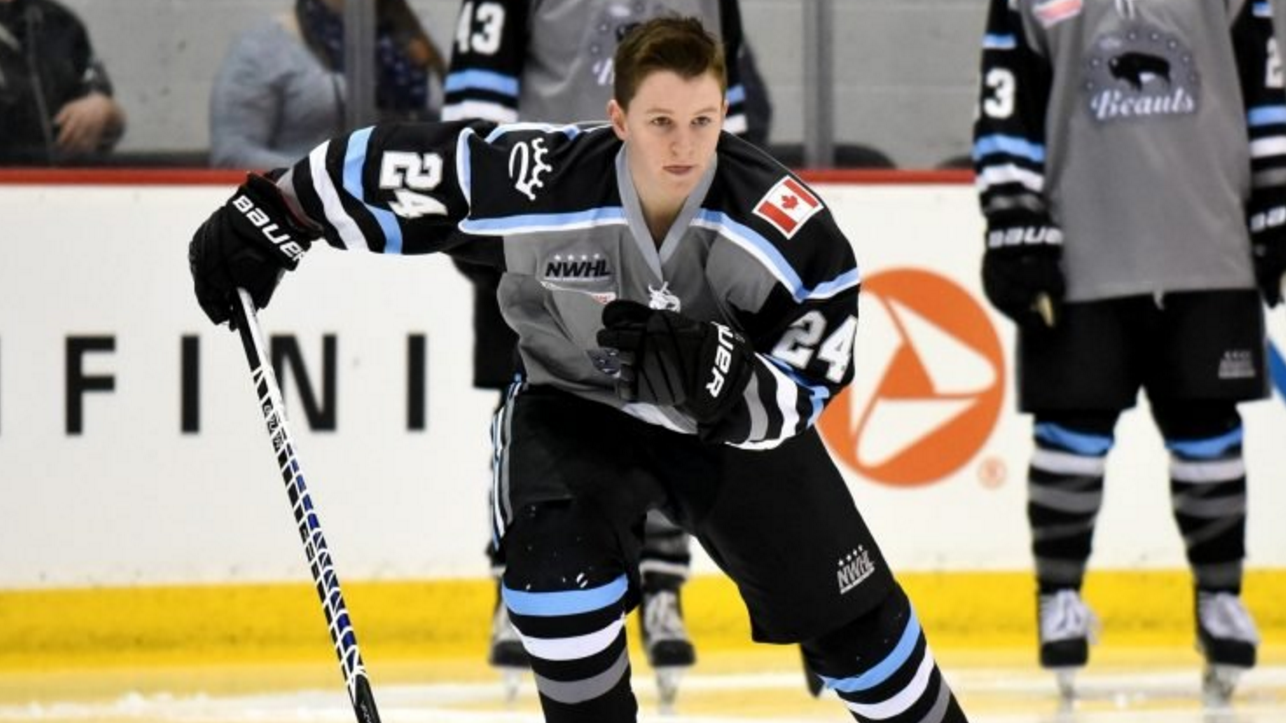A is for Alex, as in Ovechkin, the adversary who once seemed to be Sidney Crosby’s nemesis but seems less so now 11 years after they arrived in the NHL. True, Ovechkin won the Calder Trophy over Crosby in their rookie seasons and has more goals and points (525 goals and 966 points versus 338 and 938, respectively), more all-star recognition (six first teams and four second teams versus four and two) and a bigger contract (13 years at $124 million versus 12 years at $104.4).
Still, you have to think, “What might have been?” In their biggest matchups, Crosby has prevailed every time. In the 2005 world juniors final, Canada routed the Russians, and Ovechkin watched the last two periods from the bench. In the 2009 Eastern Conference semifinal, Crosby scored twice in the Penguins’ game-seven win over the Capitals. In the 2010 Olympic quarterfinals, Canada thrashed the Russians 7–3. In the 2015 World Championship, Crosby’s Canadian side knocked off Russia. And in the 2016 World Cup, with Crosby picking up a goal and two assists, Canada beat Russia 5–3 in the semifinal and held Ovechkin pointless and to a single forgettable shot.
A vignette that tells all: Ovechkin came out to the Air Canada Centre’s conference room to take questions from the media after that most recent loss and was sitting stone-faced, not speaking much above a whisper. Two minutes into yet another disappointment-soaked deposition, Crosby entered the room and took centre stage. Neither said the other’s name. Ovechkin only allowed himself the tiniest glance at the smiling Crosby at the podium as he exited the room.
It was presumed that Crosby and Ovechkin would go head-to-head every year, but it hasn’t quite played out that way: Crosby missed time with injury, the aforementioned 2009 Eastern Conference semifinal stands as the only time Ovechkin’s Caps have met Crosby’s Pens in the playoffs, and the much-anticipated Canada-Russia game in Sochi in 2014 never happened because the hosts lost in the quarterfinals to Finland.
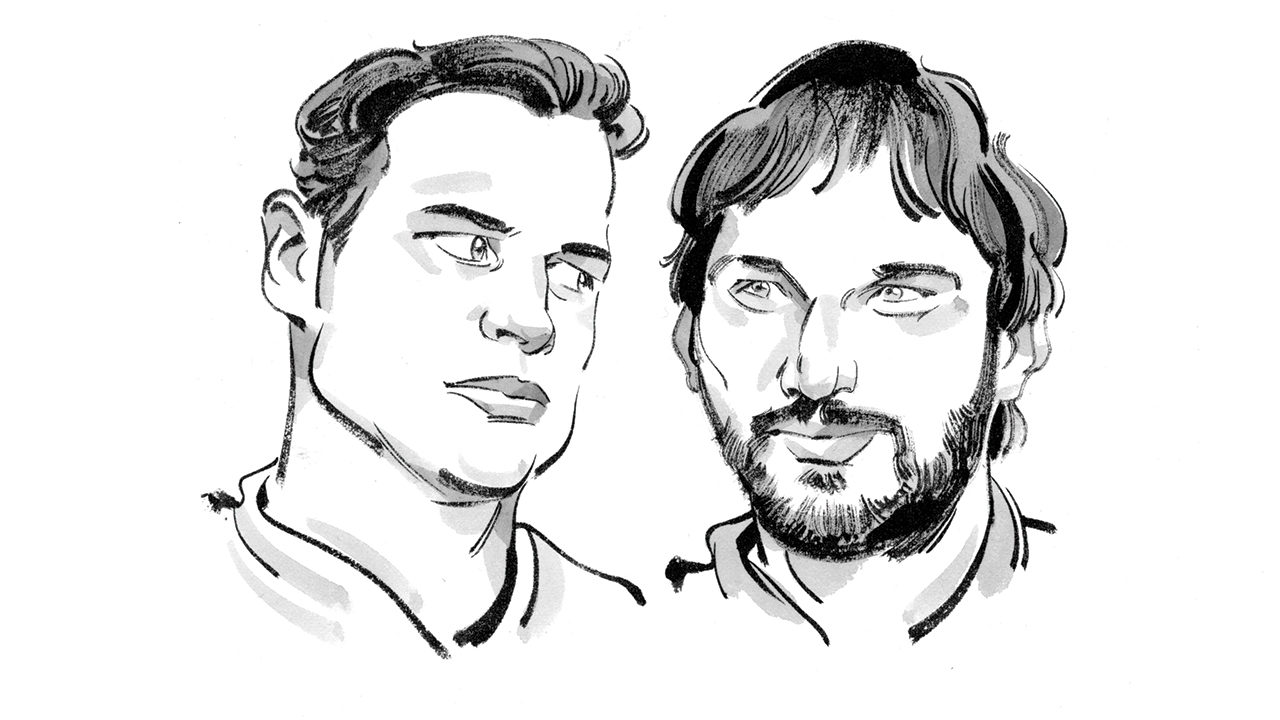
B is for Brisson, as in Pat, the Los Angeles–based agent who has advised and represented Crosby going back to youth hockey. Brisson played for the Drummondville Voltigeurs when Troy, Crosby’s father, was in goal for a season with the Verdun Junior Canadiens. Brisson’s hockey career stalled after junior and he wound up in L.A. in part because of his friendship with Luc Robitaille, his teammate in his overage year in Hull, Que. Brisson worked for Bruce McNall, who owned the Kings at the time, before landing a position with CAA, the industry-leading entertainment and sports agency. “It wasn’t that Pat discovered Sidney,” one prominent NHL agent says. “He was on everyone’s radar. CAA had a lot of big names over the years, but being able to drop [long-time CAA client] Wayne Gretzky’s name sealed the deal for him.”
C is for concussion, as in post-concussion syndrome, which seemed to threaten Crosby’s career just as he was entering his prime. Given the degree of physical abuse he took in age-group hockey and the headhunting in the Quebec Major Junior Hockey League, there’s no knowing if Crosby had ever suffered an undiagnosed concussion before making it in the NHL. If he didn’t, it wasn’t for lack of people trying to inflict one. Thus it was ironic that an innocent-looking collision with Washington centre David Steckel in the 2011 Winter Classic wound up putting Crosby on the sidelines for the better part of a year. It wasn’t Steckel’s hit alone—days later, Crosby played in the Penguins’ next game in Tampa and staggered off the ice after being taken into the boards by Victor Hedman. Crosby’s recovery was slow while under the treatment of the Penguins’ medical staff, but the outlook improved when he undertook innovative therapies administered by Dr. Ted Carrick, a chiropractic neurologist. “I don’t think ‘Darryl’ (see the letter D) ever lost any confidence that he was going to make it back,” says Eric Nielsen, Crosby’s close friend and former roommate from his Rimouski days.
D is for Darryl, as in Sittler, though only the Christian name was used by Crosby’s teammates in Rimouski, who needed to come up with a nickname when he arrived—the predictable hockey diminutive “Cros” being somehow inadequate. In Crosby’s first exhibition game, he racked up eight points and was tagged “Darryl,” a nod to the Maple Leafs Hall of Famer who scored 10 points in a game against Boston. Who originally coined the nickname is a matter of some dispute, but the name stuck when Sittler sent Crosby a signed copy of the game sheet from his 10-point night. (Nielsen steadfastly refuses to call his ex-roommate by any other name.)
E is for eighty-seven, as in Crosby’s sweater number, his year of birth and his month and day of birth. Eighty-seven is a mash-up of what are considered the luckiest and most favoured numbers in the East and West respectively: eight signifies prosperity in Asia; seven ranks as the number from one through 10 chosen by the most respondents in numerological surveys.
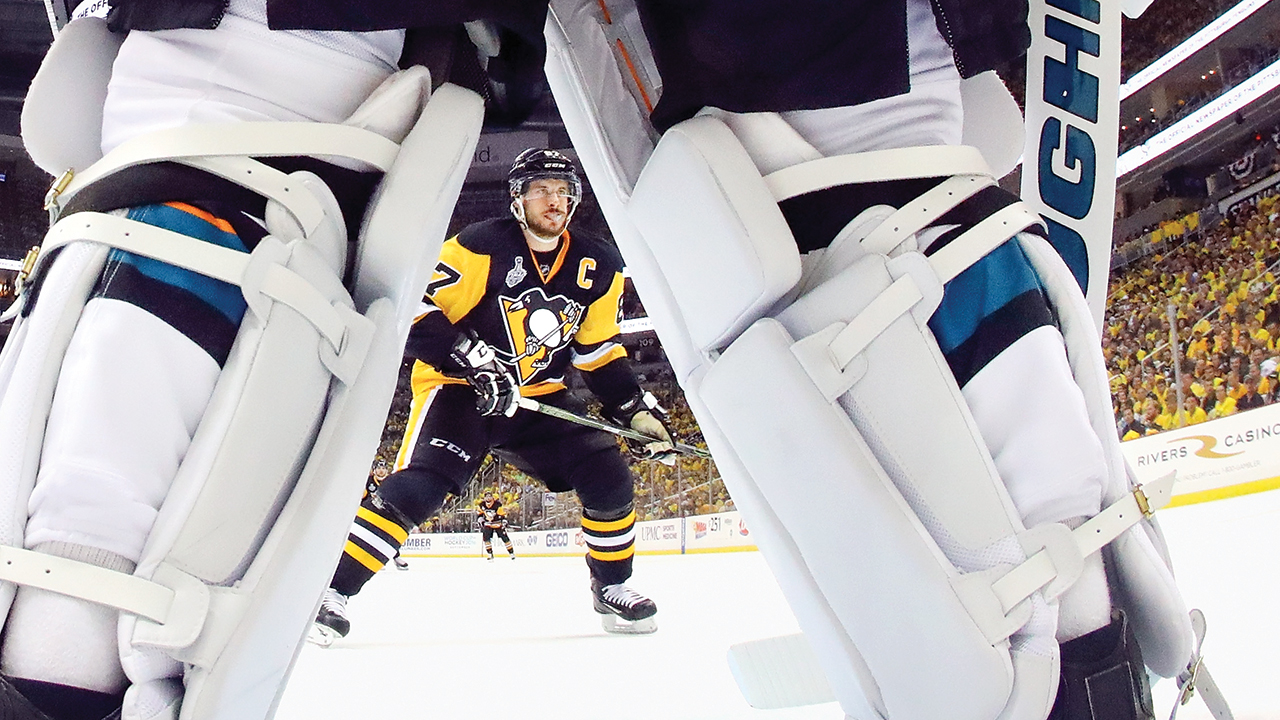
F is for fight and for Ference, as in Andrew, the veteran defenceman who became Crosby’s first opponent in an NHL fight. The summer before Crosby’s third NHL season, he convened workouts with some friends and former Océanic teammates back in Rimouski and took some razzing from them about having never been in a fight in the Quebec league or the NHL. After he pushed around a couple of guys in a scrimmage, they declared him ready to drop them in an NHL game. Says Hockeyfights.com: “Ference hits Crosby into the side boards, while Crosby tries to play the puck around the boards. Ference shoves Crosby, and they exchange a few gloved punches before dropping the gloves. They grab hold of each other. Crosby gets Ference bent over and tries to pull his jersey over his head. Ference throws an overhand right and Crosby responds with two quick rights. Ference fires back with a right of his own and then throws another to the back of Crosby’s helmet just before they fall to the ice. The linesmen jump on top of them and break things up. Ference skates to the penalty box with a cut on the top of his head. Other penalties: Ference received a roughing. Voted winner: Sidney Crosby (68.4%). Voted rating: 5.5.”
G is for Giroux, as in Claude, the fire-starter and key player for the Philadelphia Flyers, the Penguins’ archrivals. If Ovechkin hasn’t filled the role of nemesis, Giroux has become a compelling antagonist. The Flyers had a history of Crosby-baiting, established by Mike Richards. Giroux, however, took it to a higher level, starting with the first round of the 2012 playoffs, when Philadelphia upset the favoured Penguins and he deposited Crosby on his ass. The two scrapped full-on the following fall. “Obviously when you play against one of the best players in the world, you want to try to do something to stop him,” Giroux said in 2015. “Whatever it takes to get under his skin, I think we’re going to try to do.”
H is for Hortons, as in Tim, the doughnut franchise that has long retained Crosby as its highest-profile spokesman. That Crosby played Timbit hockey as a tyke in Cole Harbour, N.S., is a footnote and a marketing asset, but there is also a family connection: Rob Forbes, Crosby’s uncle and a legendary Cole Harbour athlete back in the day, was an executive with Tim Hortons for almost 20 years. Forbes still serves as a consultant with the company and launched his own sports marketing company in 2015.
I is for “Iggy,” as in Iginla, as in Jarome, Crosby’s Team Canada linemate who won the puck along the wall in overtime of the gold-medal game at the Vancouver Olympics. While famous moments in the game are often distilled in an image—think of Bobby Orr going airborne for the Stanley Cup–winning goal against the Blues—the golden goal in Vancouver was perhaps most memorable for Crosby shouting to Iginla for a pass. “I was in the first row of the upper deck, right above the corner, and I could hear Sidney yell,” Sportsnet’s Elliotte Friedman says. “I didn’t know it was ‘Iggy’ that he yelled, but you could hear it all over the arena—it was a really nervous, quiet crowd at that point. Just in that moment, I thought of something [then–Penguins coach] Dan Bylsma told me before—when a forward beats a defenceman out of the corner, it’s either a penalty or a goal. So when Sidney got a step on Brian Rafalski, I had a pretty good sense that something, one or the other, was going to happen.”
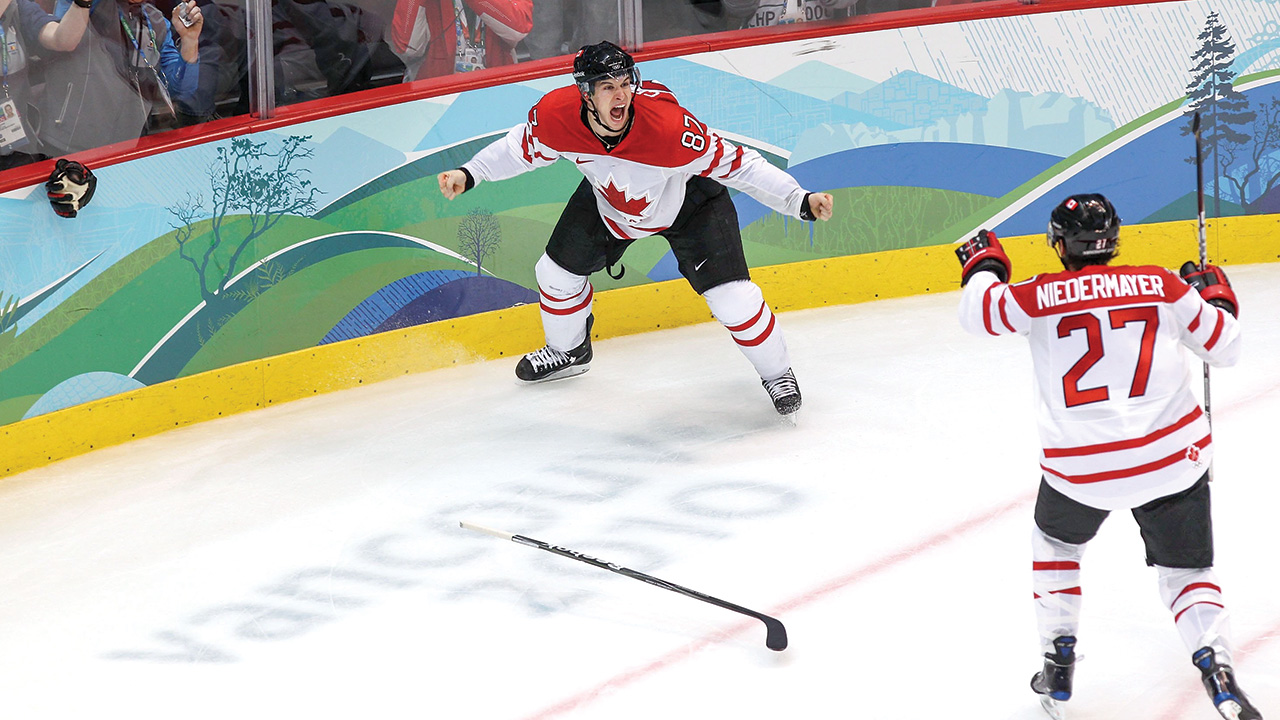
J is for Jagger, as in Mick, the Rolling Stones frontman, to whom Rimouski Océanic coach Doris Labonté compared Crosby when he drew capacity crowds in every appearance in the QMJHL. “He is our star, our Mick Jagger,” Labonté said before the Océanic took the ice at the Colisée during their annual Quebec Peewee Tournament game in 2005. Safe to say that Jagger had more supporting talent around him* than Crosby did with Rimouski.
*Except on his four critically panned solo albums.

K is for Kunitz, as in Chris, the former first-team all-star winger and owner of an Olympic gold medal from Sochi in 2014. His first full NHL season was 2005–06, and he garnered no all-star votes through 2011. Kunitz was waived by the Ducks, claimed by Atlanta, reclaimed by the Ducks, then traded to Pittsburgh in 2009. Since then: one third-place all-star vote in 2012 at age 32 (tied for 20th among left-wingers); 70 first-place, 47 second-place and 28 third-place votes in 2013 at age 33 (first all-star team); five second-place and six third-place votes in 2014 (eighth), no all-star votes thereafter. Guess the year when he was Crosby’s full-time winger.
L is for Lemieux, as in Mario, the Hall of Famer who played with Crosby for 26 games in No. 87’s rookie season. Said former defenceman Lyle Odelein: “After the lockout, I signed in Pittsburgh and took less money because I wanted to win another Cup and the Penguins looked like a loaded team—Sid and Mario, [Mark] Recchi, [Sergei] Gonchar, [Ziggy] Palffy, John LeClair, but it just never came together. Missing the season hurt the older guys like me—it was my last year. Mario couldn’t play the way he wanted to. That he’d been able to come back from retirement before was amazing, but he just felt he couldn’t do it again. The mix was just wrong, and we missed the playoffs. Sid took some criticism and blame from the media but really he didn’t deserve it. He scored more than 100 points as a rookie—amazing for a kid who was barely 18.”
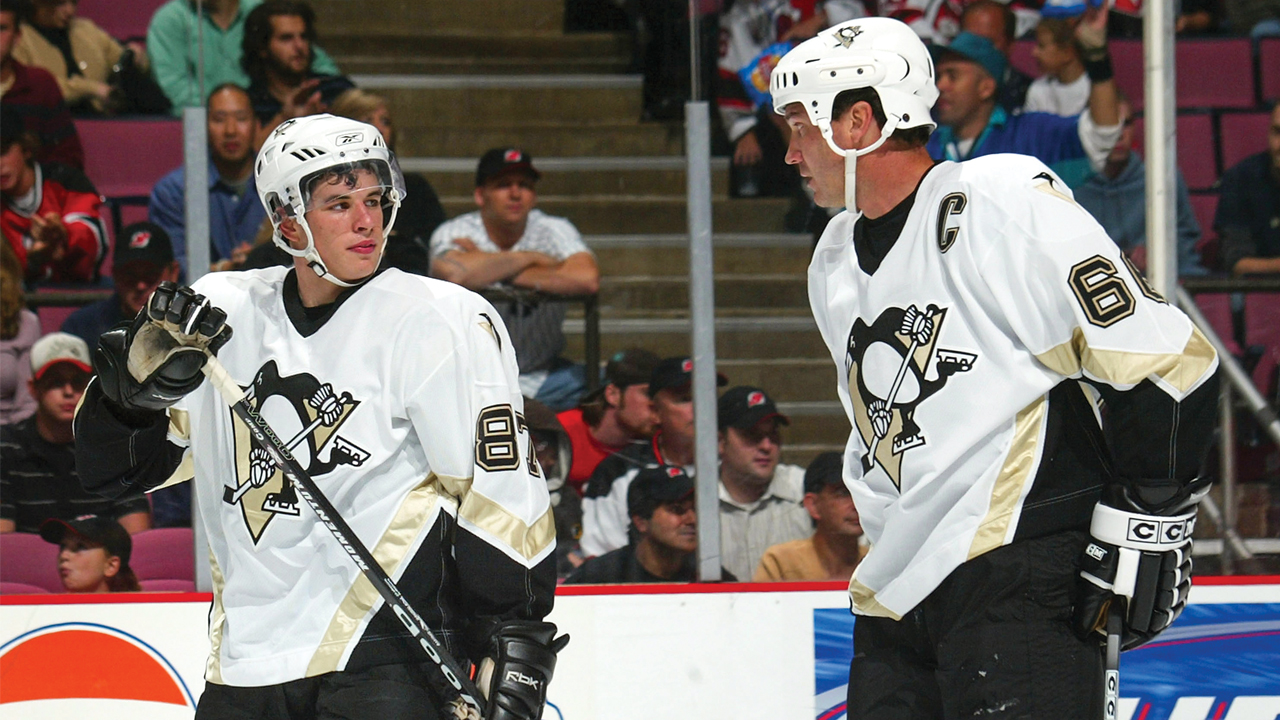
M is for MacKinnon, as in Nathan, the other native of Cole Harbour to win a major NHL award. While they appear in commercials and train together during the summer these days, MacKinnon had no contact with Crosby while growing up, despite living a couple of minutes away. MacKinnon followed Crosby’s lead and enrolled at Shattuck-St. Mary’s, a prep academy in Faribault, Minn., where he was frequently asked about his connection to the school’s most famous alumnus. MacKinnon had to tell them that he only had Crosby’s autograph and a copy of his biography, which the family dog had gnawed into small pieces. “I don’t know him and I’ve never talked to him,” said MacKinnon at 14.
N is for Ninety-Nine, as in Wayne Gretzky, the other towering talent to skate with Crosby, though even more briefly than No. 66 (see the letter L). Though Crosby was known in minor-hockey circles for his play in age-group tournaments, his profile shot up after Gretzky saw the 14-year-old skating at a CAA summer clinic in Los Angeles. The Hall of Famer wound up on the ice with the phenom—he later said it was the first time he had laced up skates since his retirement in 1999. On the basis of what he saw that day, Gretzky told reporters that his records might be broken someday by a kid who had signed with his former agency.
O is for O’Brien, as in Andy, the trainer who began working with Crosby in off-seasons when Crosby was 13. O’Brien was the high-performance director at Edge School near Calgary and worked with dozens of NHLers in addition to figure skater Patrick Chan and American swimmer Dara Torres. In the summer of 2015, the Penguins named O’Brien their director of sport science and performance.
P is for Patrice, as in Bergeron, Crosby’s linemate in international play, first at the world juniors in Grand Forks, N.D., and most recently at the 2016 World Cup of Hockey. In the under-20s, Crosby played right wing with Bergeron centring and Corey Perry on the far side. In their most recent iteration, Crosby was at centre with Bergeron on the right side and Bergeron’s Bruins teammate Brad Marchand on the left. When asked during the World Cup about the secret of their success together, Bergeron and Crosby fessed up: They speak French on the ice to confuse opponents.
Q is for quadriceps, as in the muscle group on the front of the thigh. The NHL is rife with players whose muscular development verges on the grotesque. Crosby’s quads would rank up there among the league’s most distended, but in fact they are only the second-most-remarkable aspect of his physique. “It’s incredible the way he built himself up over the years,” says Mark Tobin, Crosby’s former teammate and friend from his days in Rimouski (see the letter R). “I don’t know how he gets fitted for clothes. The only thing I ever saw like Sid’s quads are his glutes.” Given that this is a family magazine, this entry could not be listed under A.
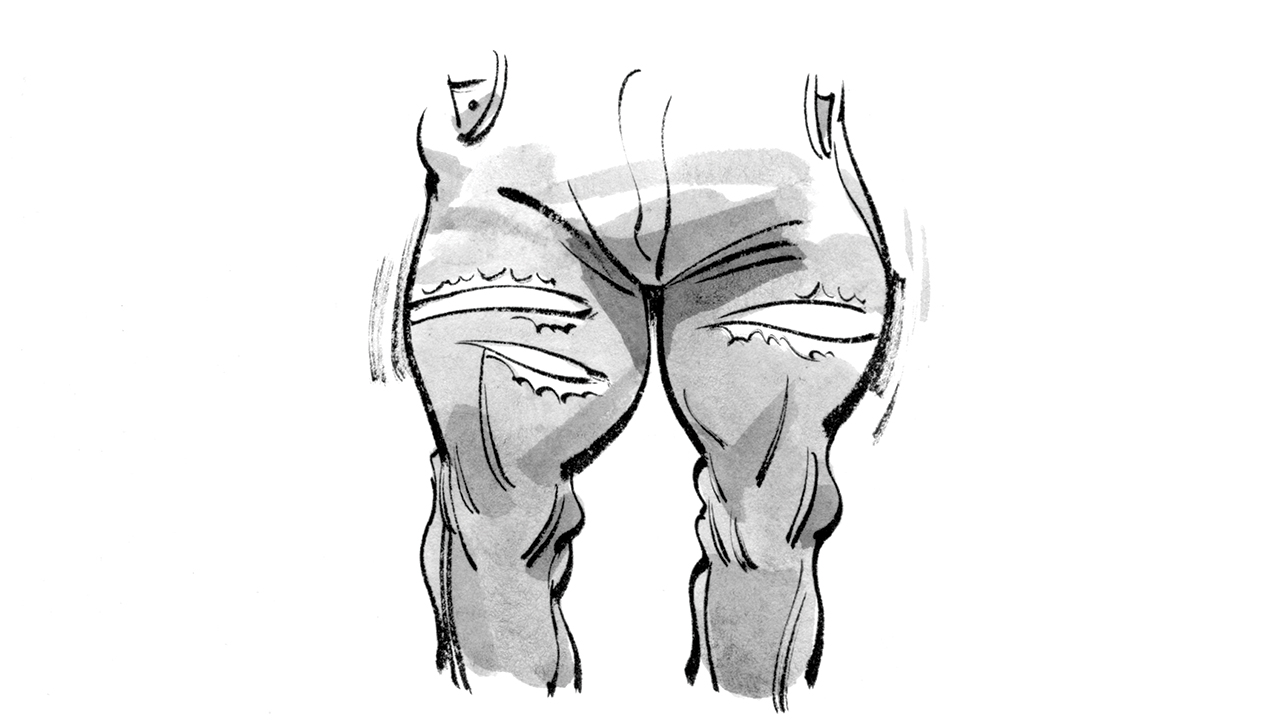
R is for Rimouski, as in the Océanic, the team that selected Crosby first overall in the 2003 QMJHL draft, although there was no knowing if he was going to report. The Halifax Mooseheads had been thwarted in their attempt to have Crosby granted exceptional-player status the previous season (by the rulebook at the time, Crosby at 15 would have had to play in the province of Nova Scotia). Ultimately, the Crosbys decided he’d be best served by being out of the spotlight in the city of 40,000 on the south shore of the St. Lawrence. Said Crosby in 2004: “Things are perfect [for development] here. Rimouski isn’t a huge town but it’s got what you need. The focus here is the team.”
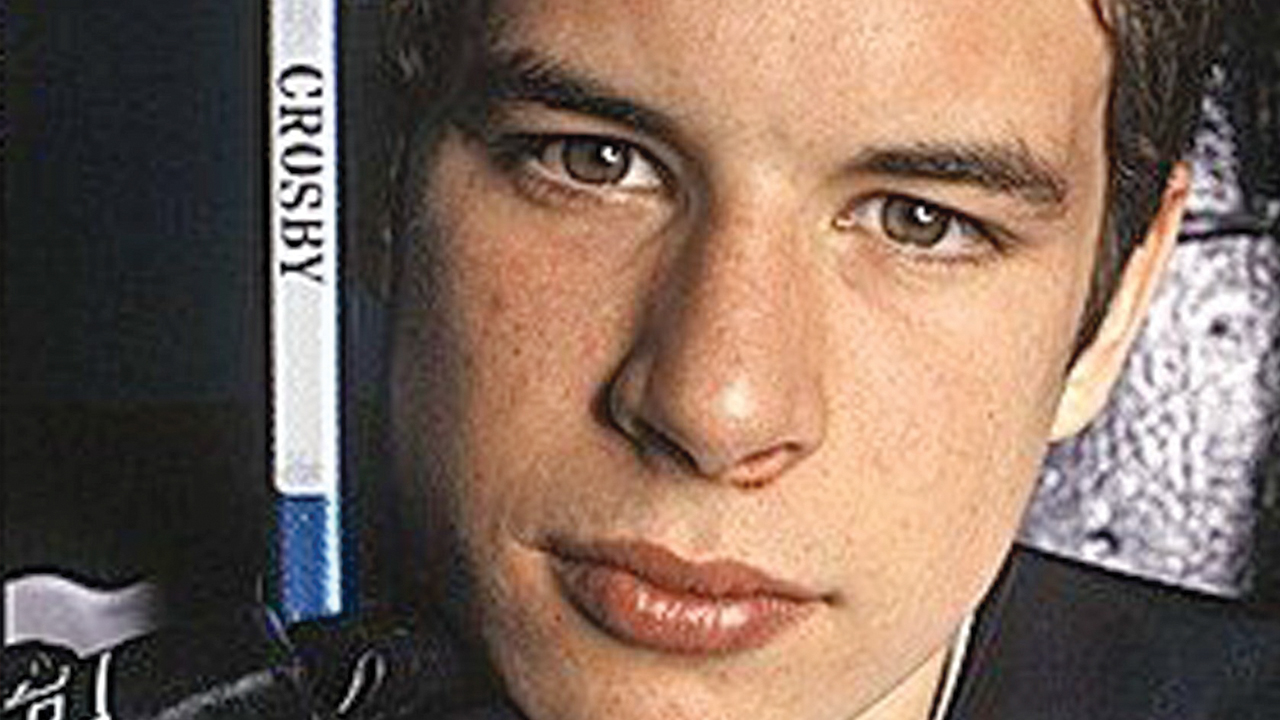
S is for sticks and stories, as each of his sticks over the years has a tale to it. Though billed as the future of the game when he came into the league in 2005, his initial choice of weapon evoked the past: a two-piece Sher-Wood with an almost-straight blade, a twig that the Penguins trainer compared to Dave Keon’s of yore. The breakdown: a Sher-Wood Momentum graphite shaft with a Sher-Wood Axiom wood blade. Crosby later switched stick makers, going to Reebok and CCM per his endorsement deals, but one of them went missing: the stick in his hands when he yelled “Iggy” (see the letter I). After the Olympic final, organizers shipped several items for display to the IIHF museum in St. Petersburg, Russia, including Crosby’s stick—they had presumed it was just one from the rack and not the one he used on the golden goal. After going missing for days, the stick was recovered in transit in Toronto. One of the gloves also went missing after the Olympics, but it turned up in the hockey bag of Patrice Bergeron (see the letter P).
T is for Taylor, as in Crosby, Sidney’s little sister and only sibling. Taylor is a goalie like her father, Troy, but followed her brother’s lead and enrolled at Shattuck-St. Mary’s. During her junior year in 2014, Taylor told Sportsnet magazine: “My brother and I have always had a great relationship, and I know how much he liked his time at Shattuck. [The other students] ask me about Sidney every once in a while, but it probably comes up less here than anywhere else. Everybody knows somebody who is in the game.” Taylor missed significant time with a concussion, a stretch that overlapped with her brother’s injury. Upon graduation, Taylor enrolled at Northeastern in Boston, but after a redshirt freshman year, she returned to Minnesota, transferring to St. Cloud State.
U is for unclean, as in the state of Crosby’s dorm room. Says former Shattuck-St. Mary’s teammate and Hobey Baker Award–winner Ryan Duncan: “Sidney and I were roommates in the Whipple House dorm. It was our first year living away from home, and we really didn’t know what we were doing. I was so homesick I just didn’t think I was going to make it, but Sidney was better that way. We were lost—completely lost—when it came to cleaning. We didn’t know to hang towels up to dry after we used them. We just sort of threw them on the floor. So our room stank pretty bad. The worst came when my parents came to visit from Calgary and we tried to clean up. Under this pile of towels there was an infestation. It was pretty embarrassing. I don’t know how we let it go that far, but I’m not going to throw the dorm parents under the bus.”
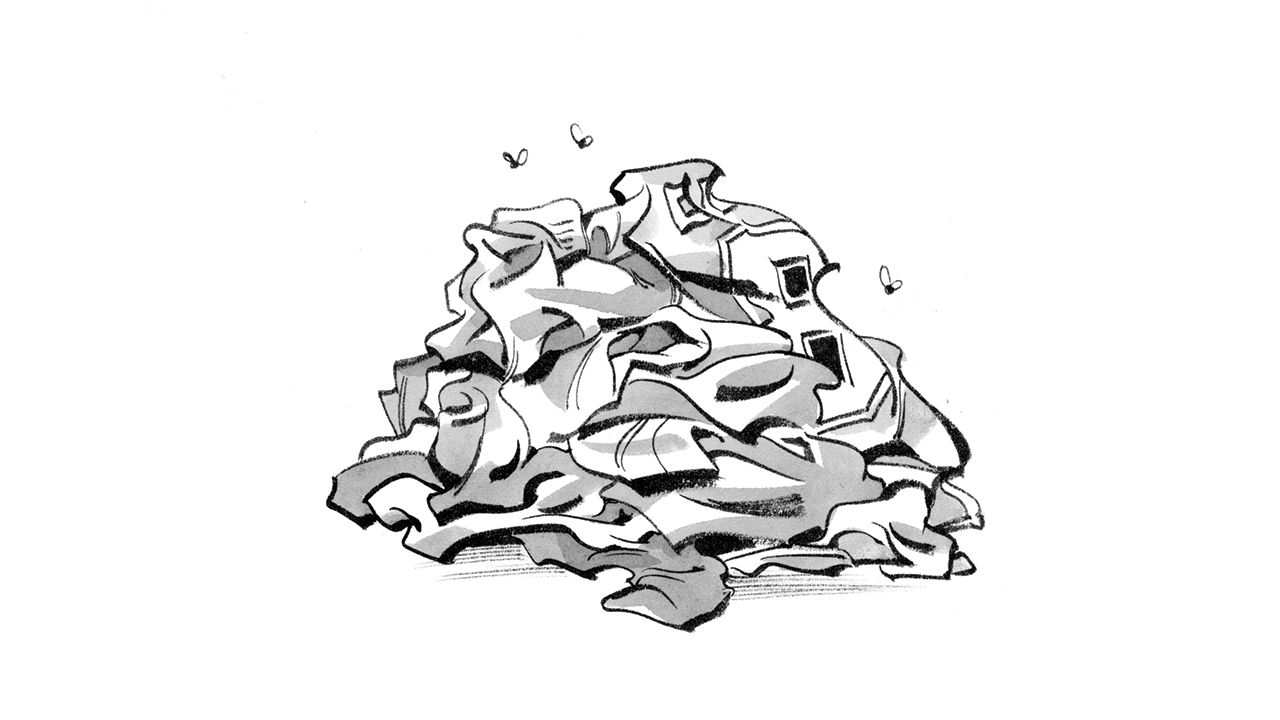
V is for vision, as in seeing opportunity where others draw blanks. Said Miroslav Satan, who played with Crosby on the 2009 Stanley Cup winners in Pittsburgh and served as GM of Team Europe at the World Cup of Hockey: “I don’t know how his game has changed in other ways. I’m not with him every day. But I see how he reads play and thinks the game. In the Russia game [the World Cup semifinal], he created the first goal all by himself, forechecking two players. He saw a chance for a turnover when almost anyone else doesn’t chase [or] maybe goes for a line change. He forces [Dmitry] Orlov to give up the puck and he’s already thinking, ‘How do I score?’ He sees things so fast.”
W is for whining, for which Crosby was criticized by Don Cherry and John Tortorella and others with various levels of credibility. “I remember talking to him in one intermission when he was bitching at a ref,” says a former Pittsburgh teammate who asked that his name be withheld. “I said that he really crossed the line and had to smarten up. It bugged him to hear it, but he needed it. He went out after that and scored the winning goal. He wasn’t even 20 and you see some kids do it. After he’d been in the league for two or three years, he was over it. Any shots he took from players or coaches or media about [whining to officials] were just based on history. It’s not anything he does anymore.”
X is for the X factor, the threat that Crosby could suffer another serious head injury in the game. Back in January 2012, neither the collision with David Steckel nor Victor Hedman’s hit inspired much hand-wringing—in fact, after the latter, Crosby flew with the team to Montreal intending to play against the Canadiens before being scratched and sent back to Pittsburgh for evaluation. It certainly seemed that his concussion issues were fully resolved when he returned to the lineup with two goals and two assists in a win over the Islanders that November. Far more worrisome was when he was pulled from the lineup seven games later and remained on the sidelines for more than three months. Because of the original concussion, a neck injury and the lockout in the fall of 2012, Crosby was limited to 22 games in more than 24 months. In the past three regular seasons, Crosby has missed just nine games, an impressive record. Still, even innocent hits or inadvertent collisions like Steckel’s put hockey fans’ hearts in their throats.
Y is for Yeah, as in, “Yeah, right.” Said one former teammate: “What do they list him at, five-foot-11? Yeah, right.”
Z is for Zimmer, as in Myles, an engineer in Calgary who 14 years ago scored three goals for the Tisdale Trojans to defeat the Dartmouth Subways in the final of the Air Canada Cup. “I lucked out at the right time,” said Zimmer, who later captained the Prince George Cougars and played a year in the ECHL before going to the University of Saskatchewan (see “Changing on the Fly,” p. 74). “We knew all about this kid, the youngest kid in the tournament, 14, playing against some really big 17-year-olds. We didn’t have a plan designed to stop him, really. We just matched Tyson Strachan against him—Tyson was the one guy from our team who made the NHL, and he had at least eight inches on Sid. I thought, ‘This kid is going to play in the NHL someday, just being able to compete with older players.’ Now it’s cool to think that there have been thousands of guys who’ve played against him and been beaten. I just had one chance to be on the ice with him and had my career game.”
